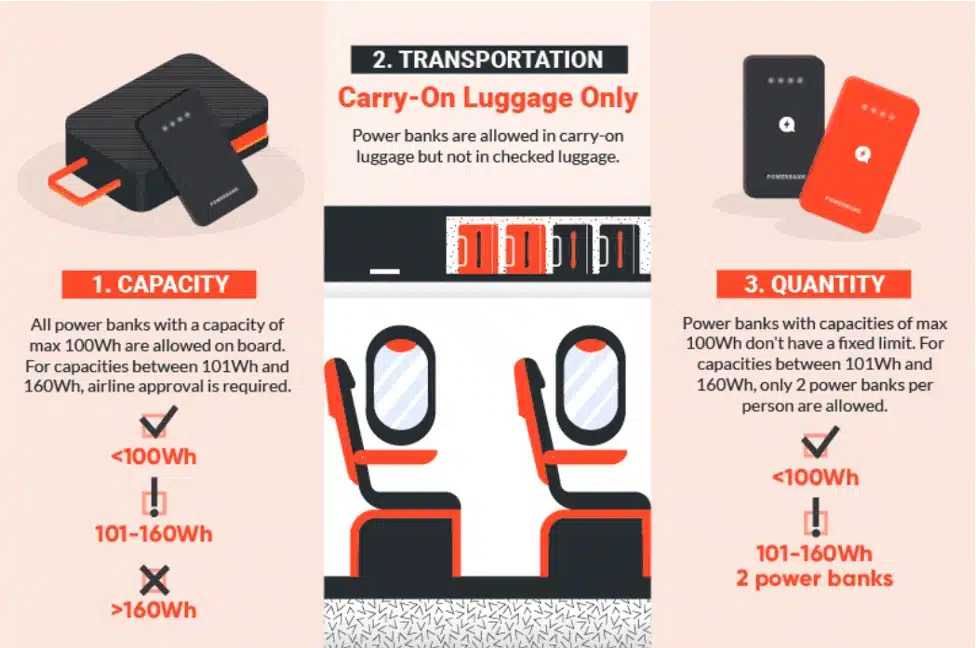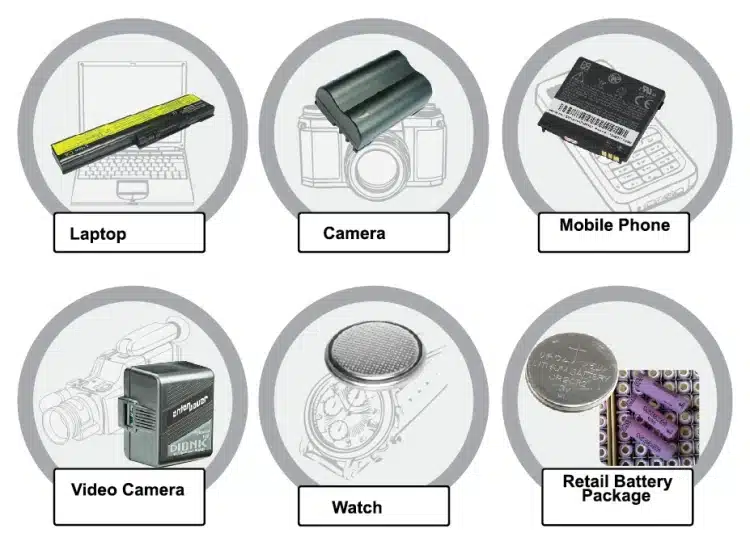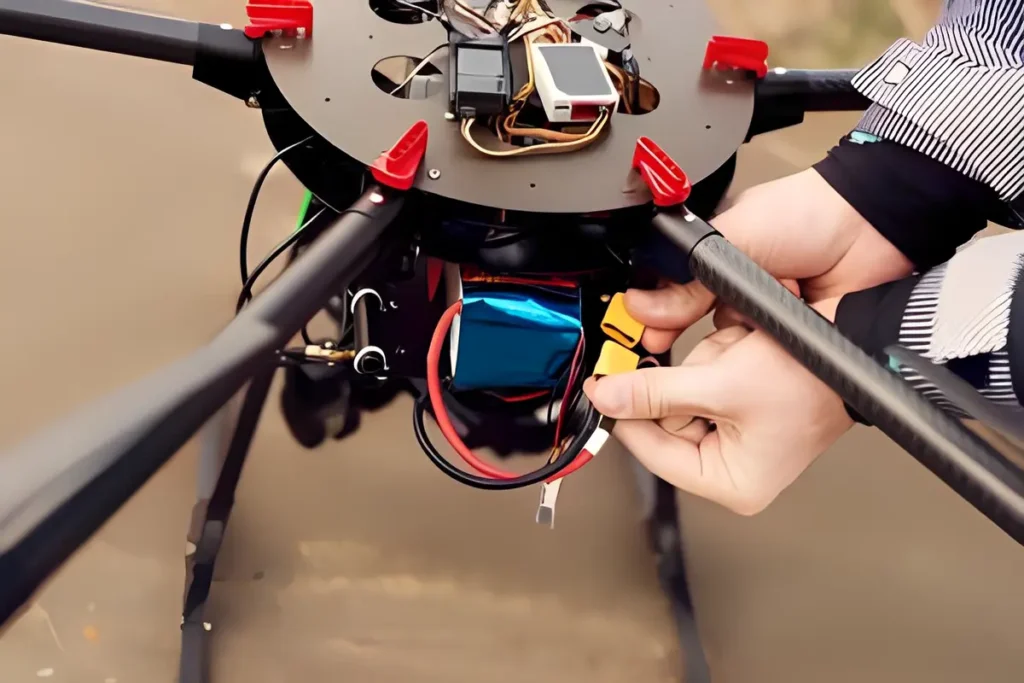Table of Contents
ToggleUnderstanding airline and aviation regulations

Here’s the key:
- Carry-on: Allowed, even for spare batteries
- Checked bags: Only batteries inside devices, no spares
Types of lithium batteries and their restrictions
Lithium-ion batteries are rechargeable. They’re used in phones, laptops, and power banks. Lithium metal batteries are not rechargeable and have more energy in a smaller size. They’re often found in watches and medical devices. Learn more here.
Airlines treat spare batteries differently from those installed in a device.
- Spare batteries must go in your carry-on, with terminals covered.
- Installed batteries can usually stay in the device, even in checked bags (but check the airline’s policy).
Battery capacity limits: what’s allowed?

- Under 100Wh: Allowed in carry-on without approval
- 100–160Wh: Allowed, but you need airline approval
- Over 160Wh: Not allowed on passenger flights
If you’re not sure about your battery size, check the label or calculate it using volts and mAh. Many laptop and power bank batteries are under 100Wh, so they’re usually fine.
How to pack lithium batteries for air travel

Flying with devices containing lithium batteries
| Device | Allowed in Carry-On | Allowed in Checked Bag | Notes |
| Laptop | Yes | Yes (with care) | Turn off before checking |
| Phone | Yes | Yes | Keep easily accessible |
| Tablet | Yes | Yes | Same as phones |
How airlines handle damaged or wwollen batteries

- Don’t throw it in the trash
- Find a battery disposal box at the airport
- Ask airline or TSA staff for help
- Store it in a fireproof bag until disposal
Always check your batteries before packing. It can save you time—and keep everyone safe.
International travel: rules may differ
- USA: Follows TSA and FAA rules (100Wh limit, spares in carry-on)
- UK: Similar to US, but some airlines require approval for 100–160Wh
- China: Strict screening; often limits battery quantity
- Australia: Allows up to 160Wh with approval
- Japan: Requires clear labeling and sometimes airline notice
For layovers, always follow the rules of each country and airline you pass through—not just your final destination.
Airline-specific battery policies
- Delta: Allows up to 100Wh in carry-on; 100–160Wh with approval – delta.com
- Emirates: Batteries over 100Wh need airline OK – emirates.com
- Qantas: Max 160Wh, must be in carry-on – qantas.com
- Lufthansa: Up to 100Wh allowed freely – lufthansa.com
Always check your airline’s website before flying. Rules can change at any time.
Tips for business travelers carrying multiple batteries
Common mistakes to avoid when flying with batteries
- Putting spare batteries in checked bags is not allowed. Always carry them with you.
- Leaving terminals exposed can cause short circuits. One traveler had a battery spark in their backpack because it touched loose coins.
- Bringing power banks over 160Wh is not allowed on most flights. Always check the size before packing.
Avoid these issues by double-checking your bags before you head to the airport.
What to do if your battery is denied at security
- Use a smaller battery under 100Wh
- Ship the battery ahead using a certified courier
- Leave it behind if no safe option is available
If your battery triggers an alert, TSA may open your bag, test it, or even remove it. Stay calm and follow their instructions. It’s all about keeping your flight safe.
How to travel with drones and lithium batteries

Safe recharging during travel
- Use only your own charger
- Avoid public USB ports (they may carry risks)
- Don’t leave batteries charging unattended
- Keep chargers away from flammable materials like bedding or paper
Charge smart. Stay safe.
Emerging tech and future regulations
Battery tech is getting safer. New designs include solid-state batteries, which are less likely to catch fire. As tech improves, airlines may allow larger or different battery types.
Groups like ICAO and UL are updating global safety standards. Some shippers now use x-ray and AI tools to find unsafe batteries in cargo.
More insurers also offer battery risk coverage, especially for commercial shipments. In the future, expect tighter rules—but also safer travel.
